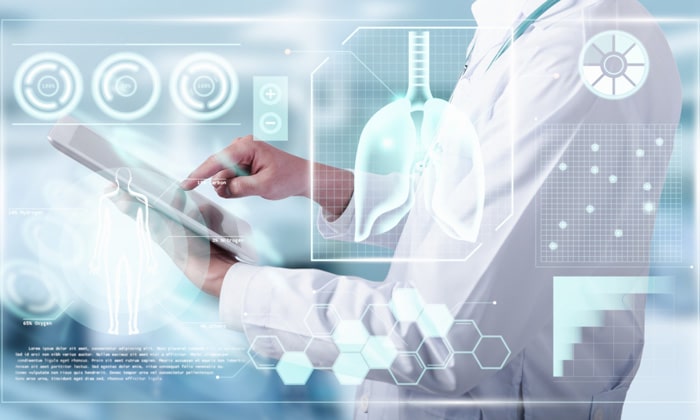Data already helps healthcare decision-making, for patient safety, treatment development, and operational success.
The unlimited flow of information that supports smooth healthcare functioning, departments, technologies, and personnel, directly influences the effective treatment of patients and the sustainable operation of the sector.
Healthcare organizations must continuously hone their long- and short-term data strategies – optimizing the capacity to securely capture, store and analyze all kinds of information for operational effect. This means more effective decision support to influence patient treatment methods and optimize operational resources. Put simply; data helps healthcare professionals make quick, informed decisions and helps them be more confident in their outcomes/diagnoses.
But does it? Data volumes are exponentially increasing, meaning more to store. Demands are becoming more immediate, meaning the time to act is now. Modeling paradigms are changing with the rise of AI, machine learning, and computational physics, chemistry, and biology more generally, meaning adaptability is required. Most worryingly, liabilities – commercial and public – are becoming more onerous, meaning more risk, a lot more risk.
In isolation, data is merely an expensive collection of information points. Data plus Models plus Distribution of Results drives efficient decision-making in the laboratory, field, hospital wards, or boardroom! Data Immediacy plus Historical Context plus Models plus Immediate Distribution of Insights delivers time, the greatest of all healers, saving lives, proactively diagnosing, and driving immediate efficiencies.
Healthcare leaders must modernize their data centers, storing vast, too vast, medical data sets alongside secured patient information – Electronic Health Records and Electronic Patient Records, for example. Patients and practitioners need access, not necessarily to the data itself, but to the decision insights, which must be validated as trustworthy. They must perform all of this amidst ever-increasing daily risks – security incidents such as WannaCry, massive disruption from pandemics, whether globally transformative like Covid19 or more localized, economic impacts of cost changes, for example, in fuel prices. The digital flows of information never stop, neither does change nor disruption, and the demands for better healthcare just keep increasing with an aging, increasingly informed, and/or self-conscious and/or paranoid population.
Data analytics that make sense of the data overload, and deliver results immediately are the key to success.
More granular data sets modeled and analyzed by rigorous (and tested) techniques, contextualized immediately by reports, dashboards, and messages, provide those insights that solve key challenges – scaling up for seasonal demands, reducing costs, improving patient and care outcomes, and maximizing a time-challenged workforce’s effectiveness.
The move towards a more thorough, comprehensive, and expansive analytics approach, which includes modern predictive modeling and response platforms, is now needed more than ever. Healthcare organizations will see increasingly impactful returns by establishing modern analytics and computational healthcare capabilities that go beyond simple insights into complex decision-making processes, especially when paired with technologies like AI.
Their heightened ability to anticipate, respond and optimize – informed by data made more valuable with deep historical context – will result in better decision-making and fewer lives lost!
Large data sets have limited value without proper analysis and contextualization. The decision for the Healthcare sector to invest in effective, real-time analytics is not one for the future; it’s needed now.
Why KX Cares
For nearly 30 years, KX has delivered the fastest and most efficient time-series data analytics for developers and data scientists within many of the most ambitious companies in the world. Our reputation and technologies were developed in the toughest data environments, notably the world’s Capital markets, and have been adopted by visionaries across industries including manufacturing, telecommunications, energy and utility, motorsports, and healthcare. KX is proud to have played a role in the global efforts to develop Covid19 vaccines, and we evolve to the next era, delivering the fastest data analytics in the cloud, we see enormous potential for the healthcare industry – from pharmaceutical manufacturers to frontline healthcare providers – to make better use of data-driven insights to optimize their outcomes. We’re excited about what’s next!
Predictive healthcare models follow similar principles to other predictive models which investigate change over time – so-called time-series data analytics – such as predictive maintenance, or price forecasting. So too, do medical, biological, and health subdomains. For example, biomedical signal processing involves acquiring and pre-processing physiological signals and extracting meaningful information to identify patterns and trends within those signals.
Sources of time-based biomedical signals can include neural activity, cardiac rhythm, muscle movement, and other physiological activities. Signals such as an electrocardiogram (ECG), electroencephalogram (EEG), and electromyography (EMG) can be captured non-invasively and used for diagnosis and as indicators of overall health.
The biomedical signal processing workflow involves:
- Signal Acquisition
- Signal Visualization and Annotation
- Artifact Removal and Pre-processing
- Feature Extraction
The extracted features are then fed into classification models or used directly for diagnosis.
The KX environment allows for time-series-focused data ingestion, processing, analysis, modeling, and presentation, through messages, reports, or dashboard visualizations. In addition, it is computationally and memory-efficient, meaning it can hold and analyze 10x more data than equivalent platforms, lower infrastructure costs, and perform the analysis – inclusive of models – in a real-time ecosystem or in offline big data investigation. In either case, there is easy interoperability with production Python code or research-oriented Jupyter Notebooks for training and calibrating predictive models that, once trained, validated, and exported as inferred models, can perform live diagnosis in real-time.



